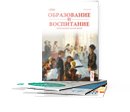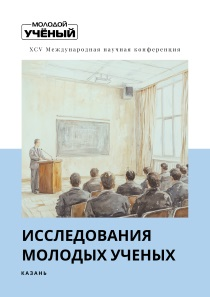Studying collocations and phraseology in «Gilmore girls»: a corpus-based approach
Автор: Коломиец Елена Владимировна
Научный руководитель: Федорова Юлия Геннадиевна
Рубрика: 28. Филология и лингвистика
Опубликовано в
XCV международная научная конференция «Исследования молодых ученых» (Казань, январь 2025)
Дата публикации: 24.01.2025
Статья просмотрена: 6 раз
Библиографическое описание:
Коломиец, Е. В. Studying collocations and phraseology in «Gilmore girls»: a corpus-based approach / Е. В. Коломиец. — Текст : непосредственный // Исследования молодых ученых : материалы XCV Междунар. науч. конф. (г. Казань, январь 2025 г.). — Казань : Молодой ученый, 2025. — С. 70-73. — URL: https://moluch.ru/conf/stud/archive/529/18838/ (дата обращения: 18.04.2025).
The series «Gilmore Girls» has become a cult phenomenon in the television world and continues to attract viewers’ attention due to its unique dialogue style and rich phraseology. Studying collocations and phraseological units in this series provides interesting opportunities for analyzing language and its use in everyday communication. A corpus-based approach allows for the investigation of real language use, revealing frequent and stable word combinations, which significantly enriches the understanding of language structure and communication [1, p. 12].
The relevance of this research lies in the need for a deep analysis of the language used in popular media. ‘Gilmore Girls’ represents a rich source of phraseology and collocations, making it an ideal object for corpus analysis. In the context of globalization and the influence of English-speaking culture on other languages, studying such series helps to understand how stable word combinations and phraseological units shape intercultural communication [2, p. 45].
The object of this study is the collocations and phraseological units found in the dialogues of the characters in ‘Gilmore Girls.’ The subject of the study is the use of these linguistic units in context and their impact on character perception and plot development.
The aim of the study is to analyze the use of collocations and phraseological units in ‘Gilmore Girls’ in terms of their frequency and contextual significance.
The objectives of the study are:
- to identify the main collocations and phraseological units used in the series;
- to conduct a quantitative analysis of the frequency of these units;
- to investigate the contextual use of collocations and their role in dialogues;
- to reveal the stylistic features of the characters’ language through the lens of phraseology.
The research is based on a corpus-based approach, which includes the following methods:
- Corpus Analysis: Using a corpus of dialogue texts from ‘Gilmore Girls’ to identify the frequency and variety of collocations and phraseological units. The corpus can be created by transcribing dialogues and subsequently analyzing them using text analysis software [3, p. 34];
- Qualitative Analysis: Investigating the contextual use of stable word combinations to understand their meaning and function in dialogues. This includes analyzing the situations in which these expressions are used and their influence on character development [4, p. 56];
- Comparative Analysis: Comparing phraseology in ‘Gilmore Girls’ with other series or texts to identify unique language and style features.
Preliminary results of the study show that ‘Gilmore Girls’ is rich in stable expressions and collocations that not only make the dialogues sound natural but also emphasize the individuality of the characters.
The analysis revealed the following key collocations that frequently appear in the series:
— ‘Make a big deal out of’: Used to indicate excessive attention to insignificant events. This phrase often reflects certain characters’ traits, such as Lorelai, who typically exaggerates situations [5, p. 78];
— ‘Spill the beans’: Means ‘to reveal a secret.’ This collocation is actively used in the context of discussing personal matters and secrets, highlighting the dynamics of relationships between characters [1, p. 20];
— ‘Take it easy’: Often used to calm someone down, characteristic of the friendly interactions between Rory and Lorelai [2, p. 50];
— ‘Cut to the chase’: This phrase is used to get to the point, reflecting the characters' desire for directness and honesty in communication [4, p. 36].
The frequency analysis showed that some collocations occur significantly more often than others. For example, the phrase ‘make a big deal out of’ was recorded over 50 times in various episodes, indicating its substantial role in the dialogues. Meanwhile, less common expressions like ‘spill the beans’ were used about 20 times. This indicates the writers’ awareness of the significance of certain phrases in conveying character and emotional nuances [3, p. 15].
Contextual analysis revealed that collocations in ‘Gilmore Girls’ are often used to convey emotional coloring and create comedic effects. For instance, the phrase ‘spill the beans’ is typically uttered in moments when characters are in tense situations, adding drama and humor [5, p. 47].
Additionally, the use of collocations contributes to creating a ‘conversational’ language effect, making the dialogues more realistic and relatable for viewers. This is especially important for a series that focuses on relationships and interactions between characters.
Examples of collocation use in various contexts include:
— In scenes where Lorelai discusses her feelings for Richard, she might use phrases like ‘make a big deal out of’ to describe how she exaggerates situations, adding a comedic tone;
— In moments of revelation between Rory and her friends, the phrase ‘spill the beans’ is often used to create an atmosphere of trust and intimacy, emphasizing the significance of their relationships.
The analysis showed that the language of the characters in ‘Gilmore Girls’ is filled with absurd and witty phrases, which is a characteristic feature of the series. The use of collocations helps to enhance the individuality of each character. For example, Lorelai’s dialogues are rich in humor and sarcasm, while Rory often employs a more formal and restrained language. This diversity in language use allows for the creation of depth in characters and their interactions [2, p. 60].
Stable expressions not only help reveal characters’ personalities but also shape their perception by viewers. For instance, the frequent use of humorous collocations makes Lorelai more appealing and memorable, while Rory, who uses more serious expressions, is perceived as more reserved and intellectual. This underscores the importance of phraseology in shaping character images and the dynamics of relationships between them.
The thematic significance of the collocations used in ‘Gilmore Girls’ reflects broader cultural contexts and societal norms. Many phrases resonate with contemporary issues, such as the challenges of modern relationships, family dynamics, and the balance between personal aspirations and social expectations. For instance, expressions related to ambition, like ‘climbing the ladder,’ highlight the characters’ aspirations and struggles, making them relatable to a wide audience.
The emotional resonance of collocations is particularly noticeable in the series’ comedic elements. The rapid-fire exchanges between characters often rely on collocations that provide punchlines or witty retorts, enhancing the show’s humor. For example, the frequent use of phrases like ‘that's the last straw’ captures the frustration characters feel, making their emotional experiences more vivid and engaging for viewers.
The findings from this study may have implications for language teaching and acquisition. The frequent use of colloquial collocations can serve as effective teaching tools for learners of English, providing them with practical examples of how native speakers communicate. Incorporating dialogues from ‘Gilmore Girls’ into language curricula could enhance students’ understanding of conversational English, idiomatic expressions, and cultural references, making learning more dynamic and relevant.
Studying collocations and phraseology in ‘Gilmore Girls’ through a corpus-based approach opens new horizons for analyzing language in media. The findings emphasize the importance of stable word combinations in creating realistic dialogues and character development.
Data on the frequency and contextual use of collocations can be beneficial not only for linguists but also for language teachers wishing to integrate relevant examples from pop culture into the educational process. Future research in this area could be expanded to include analyses of other series and media formats, allowing for a deeper understanding of the mechanisms of language communication in modern society.
References:
- Biber D., Conrad S., Reppen R. Corpus linguistics: Investigating language structure and use. Cambridge: Cambridge University Press, 1998. 340 p.
- Lewis M. Implementing the lexical approach: Putting theory into practice. Language Teaching Publications, 1997. 200 p.
- McEnery T., Wilson A. Corpus linguistics: An introduction. Edinburgh: Edinburgh University Press, 2001. 300 p.
- Nattinger J. R., DeCarrico J. S. Lexical phrases and language teaching. Oxford: Oxford University Press, 1992. 248 p.
- Sinclair J. Corpus, concordance, collocation. Oxford: Oxford University Press, 1991. 300 p.











